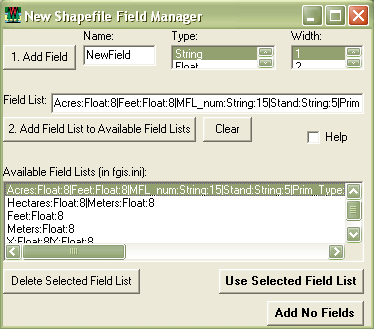 |
Introduction
- Question: How much grain can an grain
elevator hold?
- Overview: In this lesson you will
be exploring the use of volume in actual buildings in enid. You will
be able to use basic geometric equations to find the size of a building.
You will learn to use some of fgis' measuring tools to plug in to your
equations and exercise spatially a few different volume related problems.
- Textbook Source: Schultz, James E.,
Hollowell, Kathleen A., Ellis, Wade, Kennedy, Paul A. "Surface
Area and Volume of Prisms" Geometry. Austin, Orlando, Chicago,
New York, Toronto, London, San Diego: Holt Rinehart Winston, 2004 437-444
- Time Required: 25 minutes
Prerequisite(s)
The following information would be helpful in order to successfully
accomplish this activity.
- Access information on densities of related materials
here.
- The gis map can be downloaded at...
- Consult Project 8 for in depth practice in measuring
perimiter and area.
Standards Addressed
- S2.2 Draw and analyze 2- and 3-dimensional figures.
- S2.3 Use properties of 2- and 3-dimensional figures
to determine unknown values (e.g.. given the perimeter/circumference,
find the area)
Instructions
- Accessing Project
- Download the resource Garfield County Satelite Image. (This will
take quite a while, the file is very large) If possible,
your teacher needs to download this file the day before and have
it located where students may access it faster.
- Click the 'Extract all files' from the folder task menu on the
left.
- Choose My Documents as the location
to extract to, click finish when done.
- Download the Garfield Count Projects Resource
- Click the 'Extract all files' from the folder task menu on the
left.
- Choose My Documents as the location
to extract to, click finish when done.
- Click HERE
for instructions on how to assemble the Garfield County Project.
- Once you have assembled the project, open the folder named Garfield
Project.
- Open the fGIS program by pressing on the
 icon.
icon.
- Double click the "FGIS" folder and open the #4 file.
- Select the Measure project file, which should be listed in menu
as an option.
- If this is your first time using fGIS, access the video Tour
to get started.
- Lesson Instructions
- As per teacher instructions, print off a copy of the map that
automatically appears. Do this by selecting
- Map >
- Print >
- Simple Map > and then
- Enter your name in the footer space provided in the popup
window and click okay.
- Zoom in on the ADM grain building, labled in orange, in the northern
part of Enid using the
 tool. Left click and drag the mouse toward you to zoom in. Drag
the mouse away from you to zoom out.
tool. Left click and drag the mouse toward you to zoom in. Drag
the mouse away from you to zoom out.
- In order to find the volume of the building, you must first find
the area. Right-click on the map and select new layer then new polygon
layer.
- Give the layer the name grain elevator and click okay.
- A second diologue box should come up. Select the top field under
Available Field Lists. The window should look like the
example below
 - Click Use Selected Field List.
- Now select the
 tool in the middle of the top tool panel and click on the four corners
of the building moving clockwise to create a layer covering the
building's perimeter.
tool in the middle of the top tool panel and click on the four corners
of the building moving clockwise to create a layer covering the
building's perimeter.
- Go to the edit menu and click stop editing. Click okay
to save the changes.
- Now click on the
 tool in the top menu and click on the newly formed polygon to see
the area.
tool in the top menu and click on the newly formed polygon to see
the area.
- Given the elevator's height of 32.6 meters, use the area to figure
the volume of the building.
- Use the volume to figure how many kilograms of wheat can be stored
in elevator using the conversion chart located at cgsnetwork.
- Repeat the process above to figure how much grain can be stored
in other grain elevators located in Enid. Two of them are labled
on the map. Use different grains or materials for the conversion.
For further practice try using the measurements for different buildings
in Enid.
|
 |

